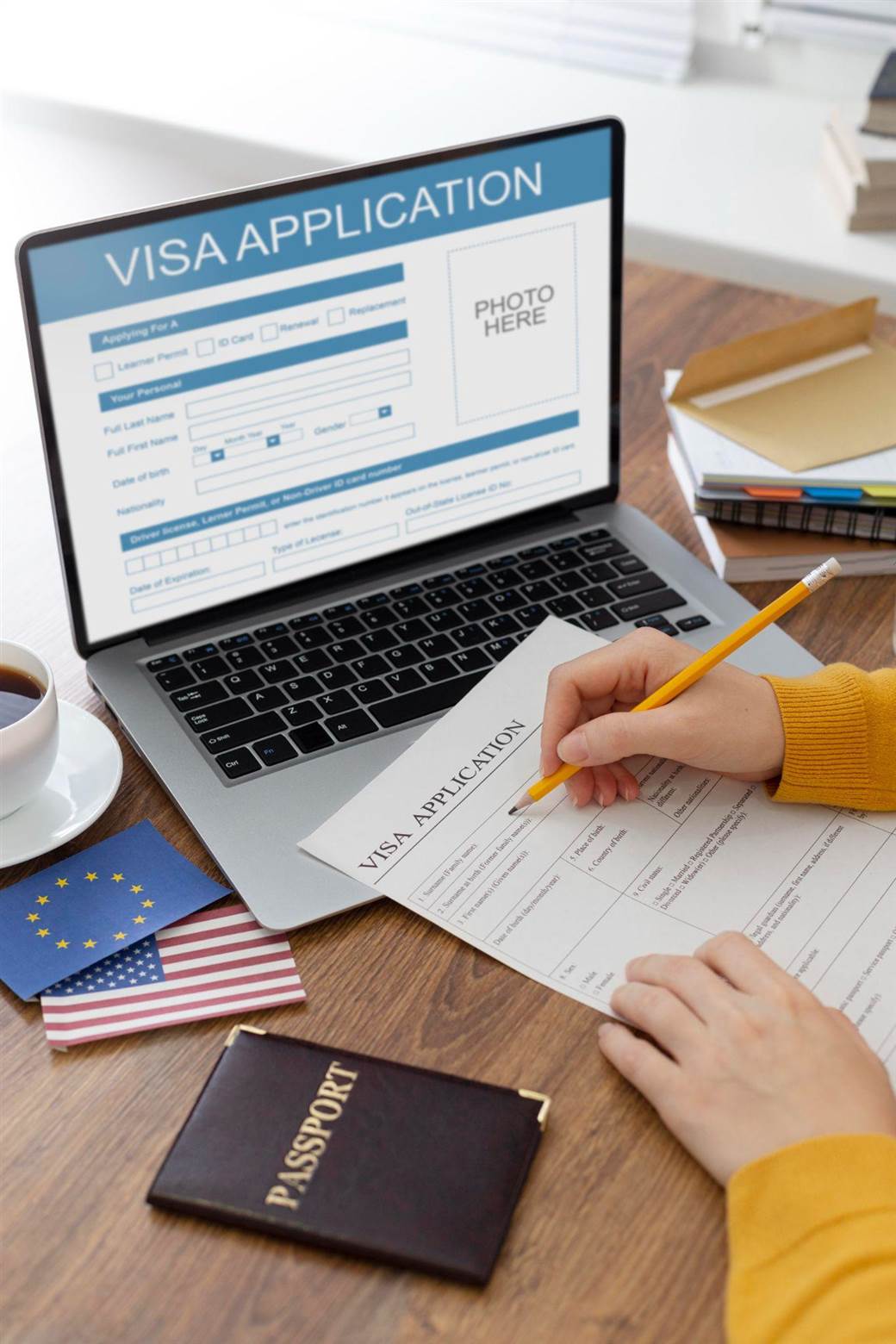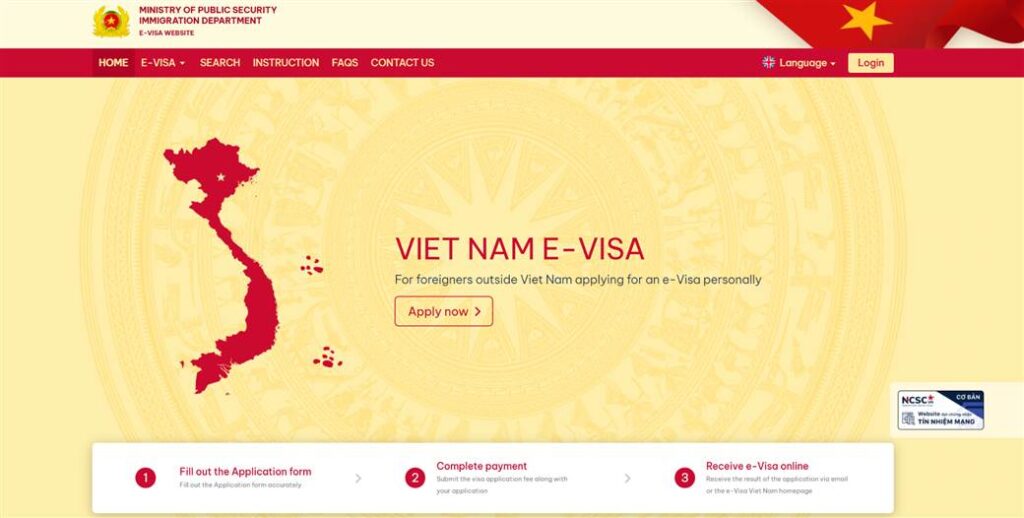In recent years, Vietnam has streamlined its visa process, making it more accessible for international travelers to explore its lush landscapes, vibrant cities, and rich cultural heritage. With the introduction of the e-Visa system, getting a visa for Vietnam has become significantly easier, though many travelers still find the process confusing. At Phieu Travel, we’ve guided countless adventurers through these bureaucratic waters and gathered all the essential information you need to secure your Vietnam visa without hassle. Whether you’re planning to ride the epic mountain roads of the Ha Giang Loop, your journey begins with understanding how to get a visa for Vietnam.

1. Vietnam Visa Types and Eligibility
Vietnam offers several visa options for international travelers, but the electronic visa (e-Visa) has become the most popular choice due to its convenience and accessibility. Before diving into application processes, it’s crucial to understand which visa type best suits your travel needs and whether you’re eligible to apply.
The Vietnam e-Visa is an official document issued by the Vietnamese Immigration Department that grants travelers permission to enter, exit, and travel within Vietnam. It exists alongside traditional embassy visas but offers a faster, paperless alternative for eligible nationalities. This digital visa has revolutionized travel to Vietnam, eliminating the need for embassy visits and simplifying the entry process.
Currently, citizens from 125 countries are eligible to apply for Vietnam’s e-Visa. Major countries include the United States, United Kingdom, Australia, Canada, most European nations, and many Asian countries. The full list is available on the official Vietnam Immigration portal, and Phieu Travel always recommends checking your eligibility before planning your trip.
E-Visas are typically granted for either tourism, business, or visiting relatives purposes. They allow for single or multiple entries with validity periods of up to 90 days, depending on your selection during application. This flexibility makes the e-Visa suitable for most travel plans, from short vacations to extended explorations of Vietnam’s diverse regions.
For travelers with specific requirements or those from countries not eligible for e-Visas, the traditional embassy visa remains an option. These visas require submitting applications through Vietnamese embassies or consulates in your home country. Embassy visas may offer longer stay durations or special categories not available through the e-Visa system.
When deciding between an e-Visa and embassy visa, consider factors like processing time, convenience, and your specific travel needs. The e-Visa process takes 3-5 working days and can be completed entirely online, while embassy applications might require in-person visits but could offer more specialized visa categories. For most travelers, especially those planning standard tourism visits, the e-Visa provides the most straightforward path to experiencing Vietnam’s wonders.

Driving License Requirements for Vietnam Motorbike Loop (2025 Guide)
2. Required Documents for Vietnam E-Visa
Preparing the correct documentation is crucial for a successful Vietnam e-Visa application. The Vietnamese Immigration Department has specific requirements, and missing or incorrect documents are among the most common reasons for application rejections. We at Phieu Travel have helped numerous travelers navigate these requirements successfully.
First and foremost, you’ll need a valid passport with at least six months of validity remaining from your planned date of entry into Vietnam. Your passport should also have at least two blank pages for visa stamps. Many travelers overlook this requirement, only to face issues at the border. Always check your passport’s expiration date before beginning the application process.
For the digital portion of your application, you’ll need to prepare two separate photos: a portrait photo and a scan of your passport data page. The portrait photo must be a recent, color headshot against a white background, taken within the last six months. The Immigration Department requires specific dimensions: 4×6 cm (or 2×2 inches), without glasses, and showing your full face.
Your passport scan must clearly show all information on the biographical data page, including your photo, personal details, passport number, and expiration date. The image should be uncropped, unedited, and perfectly legible. Both files must be uploaded in common formats like JPEG, PNG, or PDF, with file sizes typically limited to 2MB each.
Beyond these core documents, you’ll also need to provide detailed information about your travel plans. This includes your intended date of entry, date of exit, and the specific border gate where you plan to enter Vietnam. You must select this entry point from the approved list of airports, land borders, or seaports that accept e-Visa entries.
Additionally, prepare to provide accommodation details for at least your first night in Vietnam. This could be a hotel reservation, homestay information, or the address of friends or relatives you’ll be staying with. Some travelers make the mistake of omitting this information or providing vague details, which can delay processing.
For payment, you’ll need a valid credit or debit card accepted for international transactions. The system accepts major cards including Visa, Mastercard, and JCB. Ensure your card is activated for online international payments before starting the application to avoid interruptions during the process.
Best places to visit in Northern Vietnam a complete 2025 guide
3. Step-by-Step E-Visa Application Process
Applying for a Vietnam e-Visa involves several precise steps that must be followed carefully to ensure approval. The entire process takes place online through the official government portal, eliminating the need for embassy visits or paper applications. Phieu Travel recommends setting aside about 30 minutes to complete your application without interruptions.
Begin by accessing the official Vietnam National Electronic Visa Application System at https://evisa.gov.vn/, the only legitimate government website for e-Visa applications. Beware of unofficial websites that mimic the government portal but charge excessive fees. The official site features the Vietnamese government emblem and secure connection indicators in your browser.
Once on the portal, select “E-visa Issuance” and then “For Foreigners” to begin your application. The system first asks for basic information including your nationality, passport details, and purpose of visit. Select the appropriate visa type (typically tourist visa for most travelers) and entry type (single or multiple). The interface is available in multiple languages, though English is the most reliable option.

After providing your basic details, you’ll need to upload your previously prepared digital files: your passport data page scan and your portrait photo. The system has specific requirements for these uploads, including file format and size limitations. If your images don’t meet these specifications, the system will prompt you to resubmit them with necessary adjustments.

The next section requires your travel details, including your intended date of arrival, departure date, and selected port of entry. Vietnam has designated specific international airports, land borders, and seaports where e-Visa holders can enter. Common entry points include Hanoi’s Noi Bai Airport, Ho Chi Minh City’s Tan Son Nhat Airport, and Da Nang International Airport, but there are currently 13 airports, 16 land borders, and 13 seaports accepting e-Visa entries.
You’ll also need to provide your temporary residence information in Vietnam, including your first accommodation address. The form includes sections for emergency contacts both in your home country and in Vietnam if available. After completing all required fields, carefully review your entire application for accuracy before submission. Even minor errors in passport numbers or dates can lead to rejection.
The final step involves payment of the non-refundable application fee using a credit or debit card. After successful payment, you’ll receive a registration code and payment confirmation. Save this information carefully as you’ll need the registration code to check your application status and download your e-Visa when approved.


Resources: https://evisa.gov.vn/instruction
Best time to visit Vietnam ultimate guide by region, month & travel type
4. Vietnam E-Visa Fees and Processing Times
Understanding the cost structure and processing timeline for Vietnam e-Visas helps travelers plan effectively and avoid unexpected delays. The fee system is straightforward, with different rates depending on the type of entry and validity period you select. Phieu Travel always recommends applying well in advance of your trip to accommodate potential processing delays.
The standard fee for a single-entry e-Visa valid for up to 30 days is $25 USD. For those planning multiple entries into Vietnam within a 30-day period, the fee increases to $50 USD. If you need a longer stay, Vietnam also offers 90-day options: $25 USD for single entry and $50 USD for multiple entries. These fees are non-refundable regardless of whether your application is approved or rejected.
For travelers in a hurry, expedited processing is available for an additional fee. The urgent service, costing an extra $25 USD, reduces processing time to 1-2 working days. The super urgent service costs an additional $50 USD and promises results within 24 hours on working days. Weekend and holiday processing is unavailable, so plan accordingly if your travel dates fall near Vietnamese holidays.
Payment must be made online using international credit or debit cards, including Visa, Mastercard, JCB, and American Express. The payment portal is secure and processes transactions in USD regardless of your card’s currency. Some travelers may incur foreign transaction fees from their card issuers, which is separate from the visa fee.
Standard processing time for Vietnam e-Visas typically ranges from 3 to 5 working days. During peak travel seasons like Vietnamese Tet (Lunar New Year) or summer months, processing may take longer due to high application volumes. The Immigration Department counts working days as Monday through Friday, excluding Vietnamese public holidays, which can further extend wait times if your application coincides with these dates.
Once approved, your e-Visa is valid starting from your specified entry date, not the approval date. This means you can apply well in advance without losing visa validity days. The e-Visa expires at midnight on the final day of validity, so plan your exit accordingly to avoid overstay penalties.
It’s important to note that the e-Visa fee is an administrative processing fee, not a guarantee of approval. Application rejection can occur for various reasons including incomplete documentation, incorrect information, or security concerns. In such cases, you would need to submit a new application with corrected information and pay the fee again, so double-checking all details before submission is crucial.
Ha Giang Trekking Tours: Ultimate Guide for Adventurers 2025
5. Ports of Entry and Visa Validity
Not all Vietnamese border crossings accept e-Visa entries, making it essential to plan your arrival and departure points carefully. Understanding where you can legally enter Vietnam with an e-Visa and how long you can stay helps ensure a smooth arrival experience and prevents potential complications at immigration checkpoints.
Vietnam currently permits e-Visa holders to enter through 42 designated ports of entry nationwide. These include 13 airports, such as the major international gateways of Tan Son Nhat in Ho Chi Minh City, Noi Bai in Hanoi, and Da Nang International Airport. Additionally, 16 land border crossings connecting Vietnam with China, Laos, and Cambodia accept e-Visas, as do 13 seaports for travelers arriving by cruise or ferry.
When completing your e-Visa application, you must specify which of these ports you intend to use for entry. This information is printed on your approved e-Visa and cannot be changed without submitting a new application. Attempting to enter through a non-designated port with an e-Visa will result in entry refusal regardless of your visa’s validity.
Upon approval, your e-Visa document will clearly state its validity period, typically either 30 or 90 days from your specified entry date. The visa becomes valid from midnight of your declared entry date, not from the moment you physically cross the border. For example, if your e-Visa states a validity period of January 15 to February 14, you must enter Vietnam no earlier than January 15 and depart no later than February 14.
Before traveling, print at least two color copies of your e-Visa. One copy will be surrendered to immigration officials upon entry, while the second should be kept with your passport throughout your stay. Some travelers make the mistake of relying solely on digital copies, but physical printouts are required at most entry points and by law enforcement if requested during your stay.
It’s worth noting that unlike some countries, Vietnam strictly enforces the exit date on your e-Visa. Overstaying can result in fines of $25-$50 USD per day depending on the duration of overstay, potential detention until payment, and complications for future visa applications. If you need to stay longer than your original visa allows, it’s crucial to arrange an extension through provincial immigration offices or authorized visa agents before your visa expires.
For travelers planning complex itineraries, remember that an e-Visa with multiple entries allows you to enter and exit Vietnam multiple times within the validity period. However, single-entry visas are voided once you leave Vietnam, even if days remain in the validity period. Phieu Travel can help organize the appropriate visa type based on your specific travel plans, especially for those planning side trips to neighboring countries.
6. Troubleshooting & Frequently Asked Questions
Even with careful preparation, travelers sometimes encounter issues with their Vietnam visa applications or have questions about specific situations. Drawing from our experience at Phieu Travel, we’ve compiled solutions to common problems and answers to frequently asked questions to help ensure your visa process goes smoothly.
Application denials are among the most common issues travelers face. The Vietnamese Immigration Department may reject applications for several reasons, including blurry or non-compliant photos, errors in passport information, suspicious travel purposes, or incomplete application forms. If your application is rejected, you’ll need to submit a new application with corrected information and pay the fee again. Review the rejection notification carefully, as it sometimes indicates the specific reason for denial.
Technical difficulties during the application process are another frequent hurdle. If the official website experiences downtime or payment processing issues, wait a few hours and try again. Never submit multiple applications simultaneously to avoid confusion in the system. If you encounter persistent technical problems, try using a different web browser or clearing your browser cache before attempting again.
Many travelers ask whether their e-Visa can be extended while in Vietnam. The short answer is yes, but the process isn’t straightforward. Extensions must be arranged through provincial immigration offices or through authorized visa agents. Expect to pay $20-$80 USD depending on the extension length, and allow 7-10 working days for processing. Phieu Travel recommends initiating the extension process at least two weeks before your current visa expires.
Another common question concerns changes to travel plans after visa approval. If you need to enter Vietnam on a different date or through a different port than specified on your approved e-Visa, you must apply for a new visa. The original cannot be modified once issued. Similarly, if you notice errors on your approved e-Visa, contact the Immigration Department immediately using the feedback function on the official website, but be prepared to submit a new application if corrections are not possible.
For travelers worried about application status, the official e-Visa portal provides a tracking function using your application registration code. Standard processing takes 3-5 working days, but during busy periods, it may take longer. If your application shows “Pending” for more than 7 working days, you can contact the Immigration Department through the feedback form on their website or consider applying for the urgent processing service with a new application.
Lastly, travelers often ask about visa requirements for children. Every traveler, regardless of age, needs their own separate visa to enter Vietnam. Children cannot be included on a parent’s visa even if they’re in the same passport. For infants and children, the same documentation and fees apply, though the purpose of visit should match that of their accompanying adult guardians.
Getting a visa for Vietnam is much easier with the e-Visa system. Handling the details of the visa process is the first step toward an incredible adventure, whether you’re tackling the Ha Giang Loop, exploring the caves of Phong Nha, or relaxing on the beaches of Phu Quoc. Understanding how to get a visa for Vietnam is key to a seamless trip.
Read more:
- Ha Giang weather by month complete local guide for travelers
- Ha Giang Loop vs Sapa? The Ultimate Guide for Solo Adventurers in Northern Vietnam
- Ha Giang Trekking Tours: Ultimate Guide for Adventurers
- Ha Giang weather in October: climate, best time to visit & tips
- Things to buy in Vietnam the complete traveler’s shopping guide
- Pu Luong travel guide 2025 rice terraces & ethnic villages
- Most Beautiful Places to Visit in Vietnam: Essential Destinations and Insider Tips


You Might Also Like
Ha Giang Weather in September: Complete Guide for Travelers
Exploring the magnificent Ha Giang Loop in September offers travelers a perfect balance of favorable[...]
Quan Ba Twin Mountains: Ha Giang’s Iconic Fairy Hills and Complete Travel Guide
The mystical Quan Ba Twin Mountains rise from the emerald valleys of Ha Giang like[...]
Vuong family mansion: the architectural marvel and cultural legacy of Ha Giang
Deep in Vietnam’s northern highlands, where mist-shrouded mountains meet terraced rice fields, stands a testament[...]
Ha Giang Loop Safety Tips: How to Ride Securely in Vietnam’s Northern Mountains
The Ha Giang Loop, with its winding mountain roads and breathtaking landscapes, offers one of[...]
The Ultimate Guide to the M-Shaped Curve on Ha Giang Loop
Vietnam’s remote northern province of Ha Giang hides a natural wonder that has captivated adventurous[...]
Most Beautiful Places to Visit in Vietnam: Essential Destinations and Insider Tips
Vietnam captivates travelers with its stunning landscapes, rich cultural heritage, and warm hospitality. From mist-shrouded[...]
Beyond the Beaten Path: Discovering Ha Giang Province in Northeast Vietnam
Ha Giang Province in Northeast Vietnam stands as one of the country’s last frontiers for[...]
Rainy season in Ha Giang: what to expect, when to go, and travel tips
Vietnam’s northern frontier reveals a different face during the rainy season, transforming Ha Giang’s limestone[...]